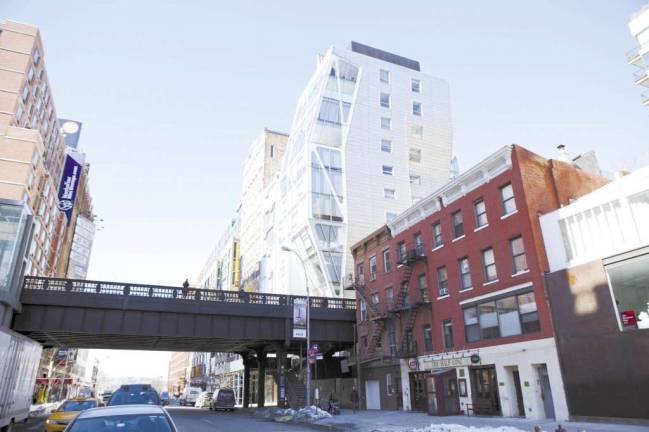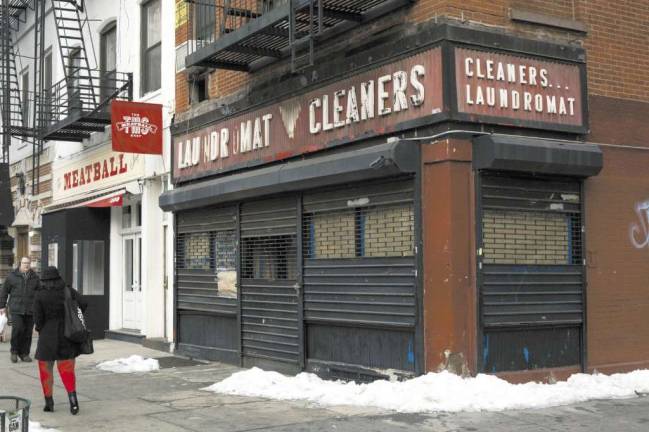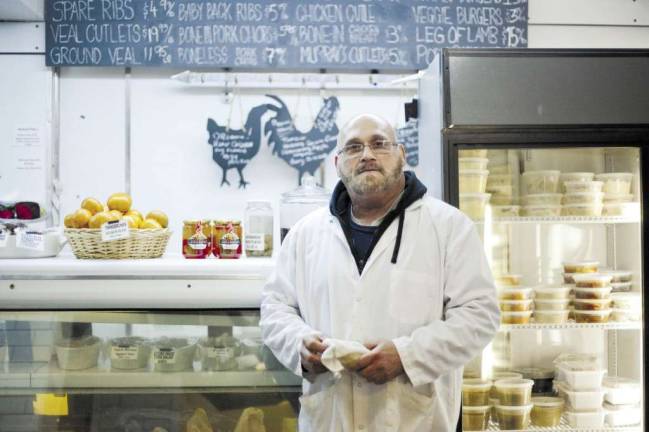The transformation of West Chelsea has been costly to long-time businesses
In the six years since the High Line Park opened in 2007, the western edge of Chelsea has been completely transformed. Once one of the last frontiers in Manhattan, the area along Tenth and Eleventh avenues now attracts an estimated three million tourists a year, turning an abandoned railway line into one of the city's most-fashionable stops. But the transformation hasn't been easy for the old-line businesses in the shadow of the High Line, many of which have struggled as the neighborhood's customer base has gone upscale.
Mike DeFilippo sits at the epicenter of the change. He bought the Knickerbocker Meat Market on Ninth Avenue three years ago, taking over a store that has been in that location since 1960. "With all the new building we are seeing, whether that is secondary to The High Line or not, it is causing a lot of problems in the neighborhood because it's driving the rents up," he said.
Jeremiah Moss, whose blog "Jeremiah's Vanishing New York" chronicles gentrification throughout the city, maintains a list of businesses along 10th avenue that have been pushed out, including Poppy's Terminal Food Shop (2011), Chelsea Mobil (2011), Artichoke Bastille's Pizza (2012), 19th Kamco Building Materials (2013), and Evan Auto Repair (2013) to list a few. "The High Line's ripple effect spreads out across Chelsea, reaching 8th Avenue where many long-time businesses are being pushed out due to rising rents," Moss said. "In one example, the Camouflage boutique just shuttered after 38 years, their rent more than tripled, from $7,000 to $24,000 a month."
The owner of Camouflage, Norm Usiak, was born and raised in New York, and currently lives on the Upper East Side. "If they can get someone who will pay twice as much, they don't care who it is. The presentation doesn't matter, so that's why you get things like a 711, Subway, or a chain pie store," said Usiak. "What's interesting about it is that eventually Manhattanites are going to sadly lose a lot of visuals. Every store you walk into these days is exactly the same."
We spoke with real estate agent Howard Aaron inside of a recently shut down café on Tenth Avenue. Aaron has worked in New York City real estate for 25 years, and has seen change like this happening all over. "Here is an area that has seen so much change, because of the meatpacking district and the High Line. It's not necessarily changing for worse or for better, it is just changing," explained Aaron. After working with landlords in the area for so many years he explained "There are a lot of mom and pop tenants that have been here a long time, but the area is definitely changing," he said. "Let's face it, the landlords have the opportunity to upscale their buildings and get better tenants."
Like most changing neighborhoods in New York, the upscaling of Tenth Avenue has sparked the debate whether this is improving, or hurting the lives of New Yorkers. The increase in safety, new shopping, and trendy eateries has benefitted the millions of tourist that visit the avenue each year; but it seems to have left the native New Yorkers living and working in the area for decades with nothing but bigger bills.





